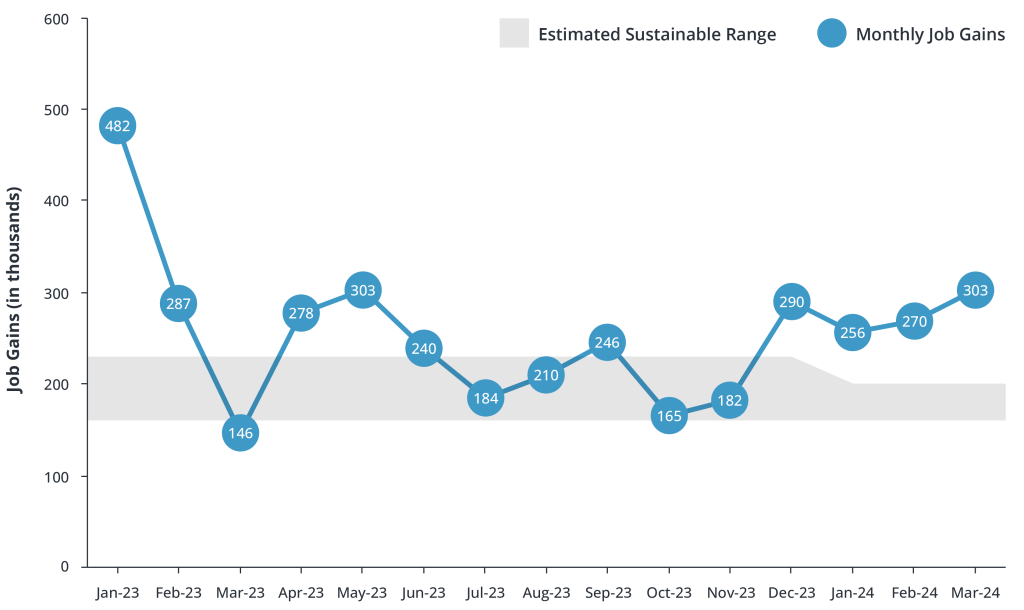March job gains are not just a sign of high labor demand for certain sectors, they are also an important indicator for the direction of inflation and interest rates.
Weekly Economic Outlook
04/16/2024
What the Latest Job Numbers Mean for Your Staffing Company
Yet again, the BLS Monthly Employment Situation report surprised many with an impressive monthly increase in total non-farm payroll employment. Not only were 303,000 new jobs added in March, but January’s numbers were upwardly revised, pointing towards a robust labor market and an increase in hiring.
However, of all the new jobs added in March the majority were realized in only a few sections of the economy. The healthcare and government sectors accounted for nearly one-quarter of total jobs added each, with the leisure and hospitality sector a significant contributor as well. These sectors experienced severe post-pandemic labor shortages and are less sensitive to elevated interest rates. Typically, these sectors also maintain their demand during economic downturns.
March job gains are not just a sign of high labor demand for certain sectors but are also an important indicator for the direction of inflation and interest rates. According to a recent report from the Brookings Institution, to keep up with both population growth and increased retirements due to demographic aging, the economy needs to add some 160,000 to 200,000 new jobs every month in 2024 (for 2023: 160,000 to 230,000). This is considered an estimated sustainable range, where the number of jobs added per month will not put unwelcome upward pressure on inflation. Ten out of the last 15 months have been above these ranges. Staffing companies should keep in mind that while this employment report is positive news for labor demand, it is mostly concentrated in select sectors as shown above. In addition, the red-hot jobs report also gives the Federal Reserve little reason to begin the promised—and anticipated by many—interest rate cuts.
Month-Over-Month Change in Total Nonfarm Payroll Employment from January 2023

Weekly Staffing Research Outlook
04/16/2024
Staffing companies can quickly source qualified talent to meet client needs, easing the very pain points expressed by employers.
Employers Continue to Report Hiring Challenges
Staffing professionals are likely well-aware of a decline in staffing industry demand in 2023 and into 2024 as the industry adjusts from a boom in 2022. However, survey data from the 2024 Career Optimism Index® by the University of Phoenix reveals that while the demand environment may have softened in the short term, staffing companies remain uniquely equipped to meet areas of employer need.
Notably, two thirds of employers are concerned about the turnover rate at their company. This is down from 74% in 2023, but it still suggests an environment in which a majority of employers may need help hiring. As for finding the right employee for a role—employers say this challenge is easing but is still a prominent concern. More than half of employers (56%) agree it has been difficult to find new talent for their company/department in the last year, down from 60% in 2023. About half say it takes one month or more to fill an empty position, down to 51% from 56% in 2023. And more than four in 10 (44%) cite a lack of well-qualified applicants as their greatest challenge to finding talent in the past year, down just two points from 46% in 2023.
The above findings suggest that while the market demand for staffing may have softened of late, there remains plenty of need in the labor market for staffing services. Staffing companies can quickly source qualified talent to meet client needs, easing the very pain points expressed by employers. Dive deeper into the findings here.
Employer Hiring Challenges



